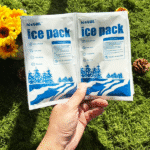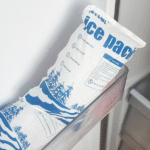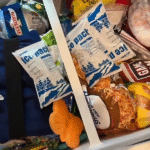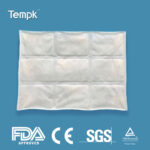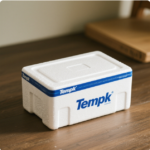How Cold Chain Temperature Monitoring Solutions Protect Products
In today’s pharmaceutical and life science supply chains, small temperature deviations can destroy life saving drugs. Cold chain temperature monitoring solutions safeguard sensitive products by tracking conditions in real time. Industry studies estimate the global sector loses between $20 billion and $35 billion every year due to temperature related cold chain failures, Und bis zu 50 % of vaccines are discarded globally when stored outside their required range. Even a 1–2 °C excursion can degrade biologics or insulin, yet many operations still rely on manual logging. Dieser Leitfaden (updated for November 2025) explains the technologies, regulatory requirements and best practices for choosing and implementing an effective cold chain temperature monitoring solution.
Why temperature control matters: cold chain failures cost billions and jeopardise patient safety.
What technologies drive modern monitoring: Datenlogger, IoT -Sensoren, RFID, GPS, Bluetooth and AI platforms.
How to comply with regulations: follow GDP, FDA and EU guidelines, maintain accurate temperature ranges and document everything.
Best implementation practices: Echtzeitüberwachung, proactive alerts, digital twins and contingency plans.
Aufkommende Trends: digitalisation, predictive analytics and market growth projections for 2025–2034.
What Is a Cold Chain Temperature Monitoring Solution?
A cold chain temperature monitoring solution combines sensors and software to continuously track temperature, humidity and related conditions across storage and transport. The goal is to keep medicines, vaccines and other biologics within safe ranges, Typischerweise 2 °C–8 °C für die Kühlung, 15 °C–25 °C for room temperature Und −20 °C or below for frozen storage. Any deviation can render a product ineffective or unsafe.
Regulators and researchers highlight the scale of the problem: pharmaceutical cold chains lose $35 Milliarde jährlich Und nearly a quarter of vaccines degrade by arrival. Manual checks and paper logs often miss excursions and leave blind spots. Modern solutions use drahtlose Sensoren, Datenlogger und Cloud-Plattformen to provide real time visibility and automated alerts, enabling operators to intervene before a shipment spoils. Advanced systems also integrate KI und Predictive Analytics to anticipate failures and optimise logistics. shows how lack of real time visibility leads to delayed quality release, compliance gaps and rising costs, whereas AI powered orchestration can predict risks and automate resolutions.
Components of a Monitoring Solution
| Komponente | Wie es funktioniert | Typical Advantages | What It Means for You |
| Datenlogger | Compact devices placed inside shipments or storage units record temperature and humidity over time. Some models transmit data via USB, NFC or Bluetooth. | Erschwinglich, easy to deploy; provide historical records for audits. | Suitable for smaller operations or shipments where real time alerts aren’t critical. But manual retrieval may delay corrective actions. |
| IoT-basierte drahtlose Sensoren | Sensors transmit temperature data via Wi Fi, cellular or LoRaWAN to cloud dashboards. Alerts notify users within minutes of an excursion. | Echtzeitüberwachung, automation and remote access; enable predictive maintenance. | Ideal for high value pharmaceuticals and multi site networks. Requires reliable connectivity and investment. |
| RFID temperature tags | Passive tags with integrated sensors attach to pallets or packages; fixed readers capture data at checkpoints. | Automates data collection, reduziert menschliches Versagen; can scan multiple items simultaneously. | Useful in large warehouses and distribution centres; limited range means more readers are needed. |
| GPS and satellite trackers | Combine location tracking with temperature monitoring for shipments in transit. | Provide route visibility and security; enable rerouting and theft prevention. | Best for long haul transport; battery life and data transmission costs must be considered. |
| Bluetooth niedrige Energie (Bloß) Sensoren | Low power sensors send data to nearby phones or gateways. | Erschwinglich, energieeffizient, good for closed environments. | Suitable for warehouses or vehicles; limited range requires local gateways. |
| Intelligente Kühlcontainer | Reefers with self regulating cooling and built in monitoring adjust conditions automatically. | Highly reliable, maintain stable temperatures; reduce manual interventions. | Perfect for long distance shipments but expensive and energy intensive. |
| Cloud-Plattformen & KI-Analyse | Centralise data from sensors and provide dashboards, compliance reports and predictive insights. | Enable proactive decision making and regulatory reporting. | Essential for complex operations seeking end to end visibility and trend analysis. |
Real World Impact
Es steht viel auf dem Spiel: up to half of all vaccines are discarded globally aufgrund schlechter Temperaturkontrolle. Micro degree excursions of just 1–2 °C can degrade biologics and insulin. These losses undermine patient trust and waste billions of dollars. Installing real time monitoring solutions helps companies act before a problem becomes irreversible. An example from a 2025 FreightWaves report shows that Cold Chain Technologies’ Smart Solutions ecosystem uses IoT sensors, predictive analytics and automation to reduce product spoilage and promote sustainability. Ähnlich, ParkourSC’s digital twin platform ingests live sensor data and uses AI powered decision intelligence to predict risks and automate resolutions, enabling companies like Thermo Fisher Scientific to reduce fit for use confirmation times from days to minutes.
Which Technologies Power Modern Temperature Monitoring Solutions?
Um die richtige Lösung zu wählen, you need to understand the technologies on offer and how they fit different use cases. Below we expand on the main categories and their benefits.
Data Loggers and Real Time Sensors
Temperature and humidity data loggers are affordable devices that record environmental conditions over time. They are easy to deploy and can work independently without network connectivity. Popular models include the Testo 184 series and Sensitech TempTale. Their drawback is the need to retrieve data manually, meaning you only see excursions after delivery.
Im Gegensatz, IoT-basierte drahtlose Sensoren send data continuously to cloud platforms via Wi Fi, cellular or LoRaWAN. This enables real time alerts and remote monitoring. Sensors such as Monnit ALTA and Blulog can detect deviations within minutes. The downside is higher cost, reliance on stable connectivity and potential cyber security risks.
RFID and BLE Tags for Automated Scanning
RFID-Temperatursensoren integrate contactless scanning with temperature logging, allowing thousands of items to be read automatically as they pass through checkpoints. This technology reduces human error and speeds up throughput. Jedoch, RFID signals can be obstructed by metal or liquids, and installing readers across a warehouse requires investment.
Bluetooth niedrige Energie (Bloß) Sensoren are cost effective alternatives for short range environments like refrigerated trucks and retail storage. They offer low power consumption and integrate easily with mobile apps. Their limited range (30–100 m) means they are best when paired with gateway devices to transmit data to the cloud.
GPS and Smart Reefers for Transit Visibility
For long haul transport, GPS based trackers provide location and temperature data simultaneously. They alert stakeholders when a shipment deviates from its planned route or experiences a temperature excursion, enabling fast rerouting or intervention. The cost of data transmission and battery maintenance should be considered.
Intelligente Kühlcontainer (Reefers) contain built in sensors and automatic cooling systems. They maintain stable internal temperatures regardless of external conditions. While energy intensive and expensive, they are indispensable for biologics and gene therapies requiring precise control during transoceanic shipping.
Innovative Sensor Technologies
Recent years have seen the emergence of miniaturised sensors that extend battery life and improve accuracy. Disruptive Technologies’ wireless temperature sensor, ins Leben gerufen 2023, measures just 19 × 19 × 3.5 mm, Angebote 15 year battery life and operates from −40 °C to +85 °C. It stores up to 100 000 samples for data backfill during connectivity outages and maintains an accuracy of ±0.5 °C for over five years. Such miniaturised sensors help retailers and hospitals reduce food waste and meet HACCP requirements.
Cloud Platforms and AI
Sensors alone are insufficient without platforms that collect, analyse and act on data. Cloud based monitoring platforms like Controlant Aurora and Lascar’s EasyLog Cloud aggregate data from multiple sensor types, store it securely and offer compliance documentation. Sie stellen Dashboards bereit, audit trails and real time alerts via SMS or email. In der Zwischenzeit, KI-gesteuerte Analysen evaluate trends, predict equipment failures and optimise routes. Zum Beispiel, ParkourSC’s digital twin platform ingests live data, combines it with carrier and enterprise systems and uses prescriptive AI to automate responses.
How to Maintain Regulatory Compliance and Safety
Understanding Temperature Requirements and Risks
Regulatory bodies enforce strict temperature ranges depending on product type: refrigerated pharmaceuticals must stay between 2 °C und 8 °C, standard room temperature drugs between 15 °C und 25 °C and ultra cold therapies at −80 °C or below. In the absence of real time controls, excursions can occur due to mechanical failures, human error or delays. Laut Pharmaceutical Commerce, Die FDA estimates that the pharma industry loses $35 billion annually from cold chain failures.
Common risks include product damage from vibrations or shock, shipment delays from natural disasters or political unrest, temperature excursions due to malfunctioning equipment or mis set thermostats, and theft or cyber breaches in the supply chain. Climate volatility is compounding these risks. Risk assessment should consider product characteristics, Verpackung, transport mode, environmental conditions and applicable regulations.
Principles of Effective Cold Chain Management
Experts recommend following six core principles to maintain a secure cold chain:
Temperaturkontrolle und Stabilität: Keep goods within their defined range (2 °C–8 °C for many vaccines, −20 °C for frozen products, −70 °C or lower for ultra low storage). Accurate temperature maintenance reduces waste and ensures therapeutic efficacy.
Kontinuierliche Überwachung: Deploy automated data loggers and real time systems for 24/7 Verfolgung. Instant alerts allow corrective action before product quality is compromised.
Nachvollziehbare Dokumentation: Maintain detailed records of temperature data, device calibration, handling and deviations. Cloud platforms provide audit trails and electronic signatures for compliance.
Proaktives Risikomanagement: Identify vulnerabilities such as equipment failure or long unloading times and prepare contingency plans for power loss or delays. Predictive analytics can prioritise high risk shipments.
Personalkompetenz: Train personnel in proper handling, Überwachung und Notfallmaßnahmen. Human error remains a leading cause of excursions.
Validierte Ausrüstung und Prozesse: Use calibrated sensors and certified refrigeration units. Lascar’s EasyLog devices, Zum Beispiel, enthalten NIST or UKAS calibration and support glycol filled probes to simulate product temperature.
Regulatory Frameworks and Calibration
Comply with international Gute Verteilungspraktiken (BIP) Und Gute Herstellungspraktiken (GMP), which emphasise temperature control, Rückverfolgbarkeit und geschultes Personal. In den Vereinigten Staaten, Die FDA’s Food Safety Modernization Act (FSMA) Und 21 CFR part 11 require electronic records and audit trails. Calibration to recognised standards like NIST or UKAS ensures measurement accuracy. Die EUs Annex 11 mandates validation and data integrity for electronic systems.
Implementing a Cold Chain Temperature Monitoring Solution: Best Practices
Step by Step Guide
Perform a risk assessment. Identify critical control points where temperature excursions may occur—loading docks, cross docking areas, last mile delivery or during customs delays. Evaluate potential impact and probability.
Define temperature profiles and regulatory requirements. Determine the acceptable ranges for each product and the documentation needed for compliance. Use guidelines from GDP, NIST and local authorities.
Select appropriate sensors and connectivity. Choose between data loggers, IoT -Sensoren, RFID -Tags, GPS trackers and smart reefers based on shipment duration, value and infrastructure. Miniaturised sensors like Disruptive Technologies’ 19 mm devices offer ±0.5 °C accuracy and 15 year battery life for extended deployments.
Implement a centralised platform. Use cloud based software to ingest data from all sensors, generate alerts and provide dashboards. Platforms such as EasyLog Cloud support audit trails, electronic signatures and multi probe connectivity.
Integrate AI and analytics. Deploy predictive algorithms to detect anomalies and recommend actions. ParkourSC’s digital twin uses prescriptive AI to automate resolutions and accelerate quality release.
Trainiere dein Team. Educate staff on device installation, data interpretation and emergency protocols. Provide refresher training for new technologies and regulatory changes.
Establish contingency plans. Prepare backup power, alternative transport routes and procedures for power loss or equipment failure.
Continuously review performance. Use data to refine routes, packaging and supplier selection. Regularly calibrate sensors and audit processes to ensure compliance.
Praktische Tipps für Benutzer
Invest in multi parameter sensors: Modern labels like Sensos Label track not only temperature but also location, Schock, humidity and tampering across 65+ countries with LTE M/NB IoT connectivity. Multi sensor data enables better decisions.
Use packaging that complements sensors: Specialist packaging with phase change materials or gel packs helps maintain stable conditions. Combined with sensors, it forms a robust defence.
Consider battery life and data storage: When selecting sensors, check battery lifespan (Disruptive Technologies offers up to 15 Jahre) and the ability to store data during connectivity outages.
Leverage mobile apps for BLE devices: BLE sensors paired with smartphones are convenient for field teams and last mile deliveries.
Integrate with enterprise systems: The biggest gains come when sensor data flows into ERP, TMS and quality management systems. This integration supports automated decision making and root cause analysis.
Fallstudie: A global pharmaceutical company adopted ParkourSC’s AI driven cold chain platform. By ingesting real time signals from 500 000 Sendungen, the company reduced fit for use confirmation times from three days to one minute, minimised waste and improved compliance. This illustrates the power of digital twins and predictive analytics in streamlining operations.
Trends and Innovations for 2025
Marktwachstum und Investitionen
The cold chain monitoring market is expanding rapidly. Precedence Research projects it will grow from USD 36.88 Milliarden in 2024 in USD 266.66 Milliarden von 2034, eine CAGR von 21.88 %. Hardware accounts for the majority of revenue (79 % In 2024), but software is expected to grow fastest at 23.72 % CAGR. Pharmaceuticals will be the fastest growing application, with a forecast CAGR of 24.52 %.
Digitalisation and Smart Solutions
The future of cold chain monitoring lies in digitalisation. FreightWaves reports that Cold Chain Technologies is shifting from traditional thermal packaging to smart logistics that leverage IoT sensors, predictive analytics and automation. The World Health Organization estimates that um 25 % of vaccines degrade by delivery, underscoring the urgency for smarter systems. Digital platforms turn the cold chain from a passive process into a proactive operation that anticipates disruptions and responds before quality is compromised.
AI and Digital Twins
Artificial intelligence and digital twin technology are becoming mainstream. ParkourSC’s AI driven orchestration uses prescriptive analytics to automate decisions, predict risks and optimise routes. Digital twins recreate the supply chain virtually, enabling scenario planning and real time intervention. These tools will become critical as cell and gene therapies, decentralised clinical trials and ultra low storage requirements increase complexity.
Miniaturisation and Sustainability
Sensors are becoming smaller and more energy efficient. Disruptive Technologies’ wireless sensor, mit ±0.25 °C initial accuracy and 15 year battery life, exemplifies this trend. Miniaturisation reduces installation costs and energy use, Beitrag zur Nachhaltigkeit. Gleichzeitig, digitalisation supports environmental goals by reducing waste and optimizing transportation routes.
Software Ecosystem
New platforms are emerging. SafetyCulture’s iAuditor integrates sensors with digital checklists, alerts and centralized reporting. ColdTrak Data Central offers RF wireless monitoring and compliance documentation. Controlant Aurora provides real time logistics data, actionable insights and compliance assurance. These software ecosystems help organisations choose solutions tailored to their size and industry.
Häufig gestellte Fragen
Q1: Why is temperature monitoring important in pharmaceutical logistics?
Temperature excursions can destroy biologics, vaccines and insulin within hours. The FDA estimates the pharmaceutical industry loses $35 Milliarde jährlich due to cold chain failures, und bis zu 50 % of vaccines are discarded global. Real time monitoring solutions help prevent these losses by providing immediate alerts and enabling corrective actions.
Q2: What temperature range should refrigerated medicines be kept at?
Most refrigerated pharmaceuticals must remain between 2 °C und 8 °C. Room temperature products typically stay between 15 °C und 25 °C, while ultra cold therapies may require −80 °C or colder. Monitoring devices should be selected based on these ranges.
Q3: How do IoT sensors differ from data loggers?
Data loggers record conditions and are retrieved later, providing historical data. IoT -Sensoren transmit data continuously via wireless networks, allowing real time alerts and remote access. IoT sensors are ideal for high value shipments requiring rapid intervention.
Q4: Do I need an AI platform for monitoring?
AI isn’t mandatory but offers significant benefits. Predictive analytics can forecast equipment failure, route disruptions and temperature trends, proaktives Eingreifen ermöglichen. For complex supply chains or high value products, AI platforms improve compliance, reduce waste and accelerate quality release.
Q5: What features should I look for in a monitoring system?
Zu den wichtigsten Funktionen gehören calibrated sensors with ±0.5 °C accuracy, long battery life, real time connectivity, multi parameter sensing (Temperatur, Luftfeuchtigkeit, Schock, Standort), cloud dashboards with audit trails, automatisierte Benachrichtigungen, Und compliance reporting. Choose a system that integrates with your existing logistics software and supports the temperature ranges relevant to your products.
Zusammenfassung und Empfehlungen
Maintaining the right temperature across complex supply chains is critical. Cold chain temperature monitoring solutions combine Sensoren, Konnektivität, cloud platforms and analytics to safeguard products and meet strict regulations. Zu den wichtigsten Erkenntnissen gehören::
Economic impact: Cold chain failures cost the pharma industry $20–35 billion annually, und bis zu 25 % of vaccines degrade during transit.
Technology choice: Use a combination of data loggers, IoT -Sensoren, RFID, GPS and BLE depending on shipment value and complexity. Select sensors with long battery life and ±0.5 °C accuracy.
Einhaltung: Halten Sie sich an das BIP, FDA and EU requirements. Maintain accurate temperature ranges (2–8 ° C, 15–25 °C, −80 °C) and keep detailed records.
Echtzeitüberwachung & Ai: Deploy real time solutions with automated alerts and predictive analytics to reduce waste and speed up quality release.
Kontinuierliche Verbesserung: Personal schulen, calibrate devices and review data regularly. Use digital twins and AI to transform operations from reactive to proactive.
Aktionsschritte
Evaluate your current cold chain processes—identify gaps in monitoring, documentation and responsiveness.
Choose sensors and platforms suited to your products and routes. For extended life and accuracy, consider miniaturised sensors with long battery life.
Integrate real time monitoring into your logistics systems and set up automated alerts. Use cloud dashboards for 24/7 oversight.
Invest in analytics and AI to predict and prevent excursions. Start with pilot projects and expand across your network.
Trainiere dein Team on new technologies and regulatory requirements. Embrace a culture of continuous improvement.
Aufruf zum Handeln: Ready to protect your temperature sensitive products? Start by evaluating a trial of an end to end monitoring platform and engage experts to design a tailored solution.
Über Tempk
Tempk is a technology company specialising in cold chain monitoring systems for life science, pharmaceutical and food applications. We combine IoT sensors with a cloud native platform to provide real time visibility, automatisierte Benachrichtigungen Und compliance reporting. Our devices are calibrated to NIST standards and offer multi parameter sensing (Temperatur, Luftfeuchtigkeit, Schock, Standort) with long battery life. We support integration with major logistics and quality management systems and offer expert guidance on regulatory compliance.
Nächster Schritt: Contact our specialists to discuss your cold chain challenges and explore how Tempk’s solutions can safeguard your products and streamline operations.
















